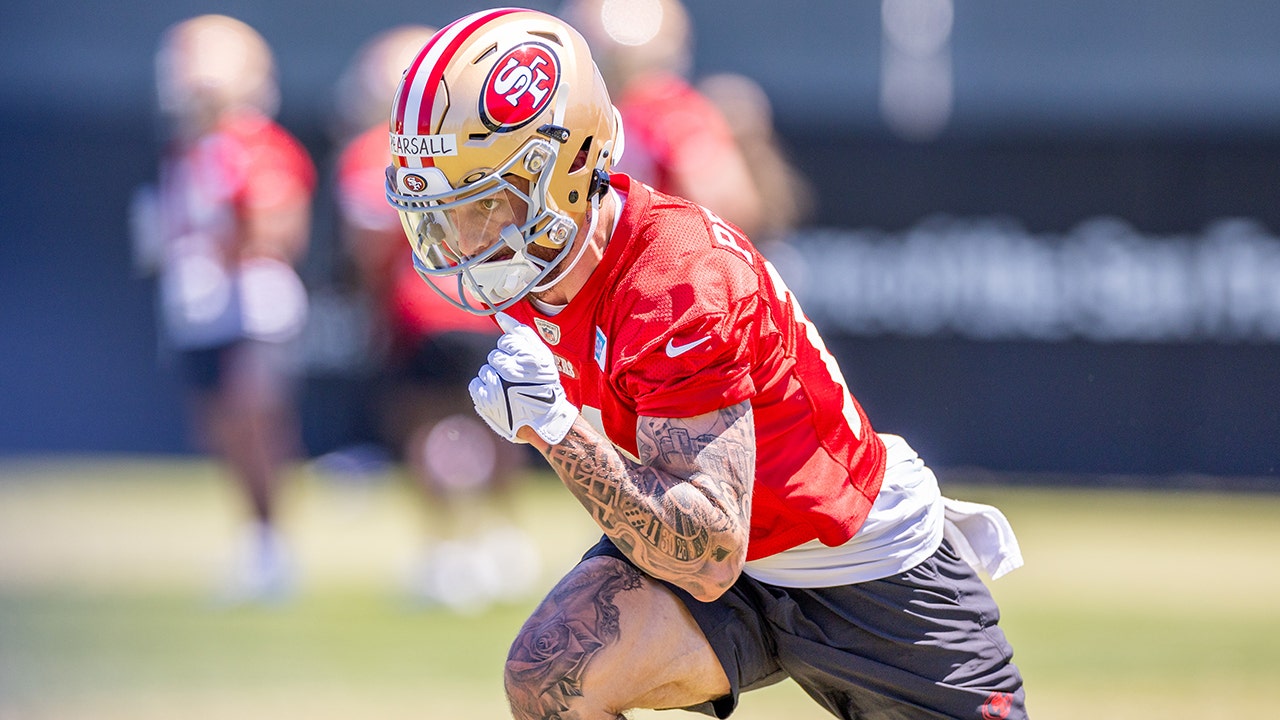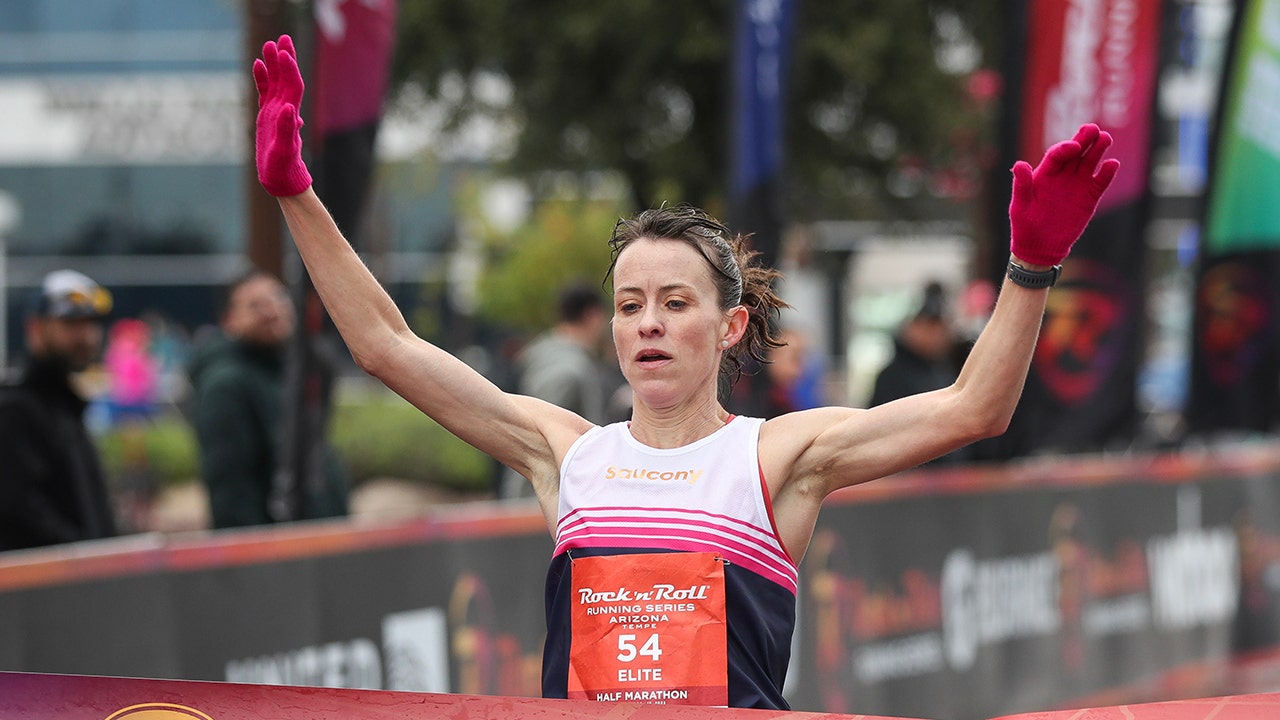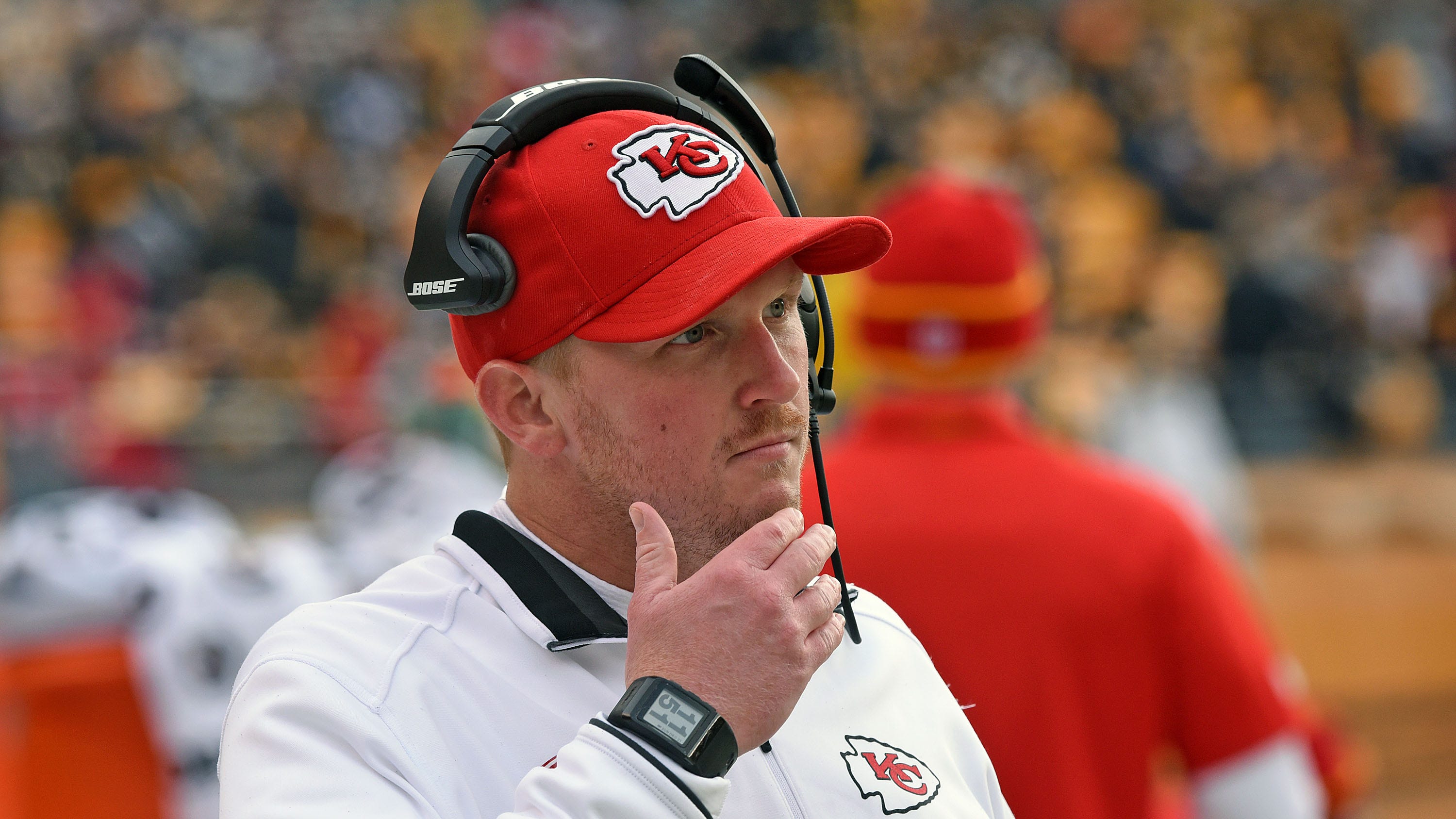Maybe you’ve seen him.
Perhaps his sideways glance and piercing blue eyes have crossed your timeline. His smirk might be all over your TikTok. If you follow baseball or if your algorithm has decided you like livestock, you may have encountered McCreamy, the muscular mascot of the Danville Dairy Daddies.
The brawny bull with a bright pink nose dons blue jeans and a “DD” belt buckle but no shirt, propping one hoof on his hip while the other rests against a bat standing by his feet. His unveiling went viral, providing a level of exposure not usually seen for a collegiate summer baseball team from an unincorporated Virginia city of 42,000 people in the regional Old North State League.
But this was no accident. The Danville Dairy Daddies knew exactly what they were doing.
There’s a story behind their name, a thought process behind their color palette and an award-winning designer behind their logo. Such is the case for many of the eccentric team names filling the minor leagues and collegiate summer leagues in recent years. The magic lies in the quirks that tie the clubs to their communities. The fun comes from the winks, nods and Easter eggs that teams incorporate in their branding to tell locals, “Hey, we know what makes this town special, and we’re leaning into it.”
That’s partially how a topless bull came to represent a team in Pittsylvania County, which boasts three of the five largest dairy farms in Virginia. The Dairy Daddies moniker was initially suggested to general manager Austin Scher as a potential name for Danville’s first collegiate summer team, the Otterbots, in 2021. Over the next three years, the alliteration stuck in Scher’s brain, and when he learned of the local connection, there was no denying the divining of the Dairy Daddies and their main man McCreamy.
“While it is quirky and silly and somewhat tongue in cheek, there is a very real community connection,” Scher said. “The blue and pink are designed to elicit feelings of newness, of birth, of rebirth. You see those two colors together and you might think of a gender reveal party or a nursery. Then you look at this muscle-bound cow, and you’re thinking, ‘Well, that’s not a baby. That’s very much full-grown.’ Danville and all of southern Virginia are in the middle of this massive resurgence.”
Good mooooorning fam. pic.twitter.com/a11eFunPhT
— Dairy Daddies (@DairyDaddies) February 29, 2024
Each component of McCreamy conveys a characteristic of his community. Paul Caputo, host of the “Baseball by Design” podcast, which explores the origin stories for minor-league nicknames, sees that same quality in team names across the country.
“You can tell the story of America by understanding why minor-league baseball teams have the names that they have,” he said.
The Dairy Daddies are just the latest in a long line of lower-league baseball teams that shirk traditional names in favor of more eye-catching identities. Pinpointing the origins of the trend is difficult — you could trace it all the way back to the late 1800s, when a team called the Dudes existed in Pensacola, Fla. — but the recent surge of silliness stems in part from Major League Baseball’s downsizing of the affiliated minor leagues from 163 teams to 120. Forty-three franchises lost their affiliation in 2020. Many of those teams played under the same names as their former MLB parent clubs and had to rebrand. Former rookie-league teams like the Burlington (N.C.) Royals and Pulaski (Va.) Yankees re-emerged as the Sock Puppets and River Turtles to play collegiate summer ball in the Appalachian League.
Teams that maintained their MLB affiliations have also jumped on the funky name train with hopes of invigorating their brands. Pick nearly any league, at any level, and there’s a nickname or logo that will make you stop and gawk. The Carolina Disco Turkeys. The Montgomery (Ala.) Biscuits (formerly the Orlando Rays). The Minot (N.D.) Hot Tots. The Rocket City (Ala.) Trash Pandas (formerly the Mobile BayBears). The Wichita Chili Buns (an alternate identity of the Wichita Wind Surge).
Without the constant media coverage and cash flow MLB organizations enjoy, lower-league teams have to get creative to stir up engagement, increase exposure and keep their franchises afloat.
“I see pictures of people visiting the Eiffel Tower and the Taj Mahal and they’re wearing Trash Pandas shirts when they do it,” Rocket City’s director of marketing Ricky Fernandez said. “It blows my mind that someone’s like, ‘We’re going to the Eiffel Tower today! I better get my finest raccoon astronaut T-shirt on so I can snap a selfie!’”
Eiffel Tower 📍
Paris, France 🇫🇷https://t.co/5tFZEz6w5X pic.twitter.com/A88VZCgBdQ— Rocket City Trash Pandas (@trashpandas) June 23, 2022
Even with a local connection, an unusual name can take time to accept. Take the Jacksonville Jumbo Shrimp. The Miami Marlins’ Triple-A affiliate played as the Suns from 1990 to 2016, when new ownership took over. Though the new team name has a tie-in to the local shrimping industry, the public wasn’t immediately sold. Noel Blaha, Jacksonville’s vice president of marketing and media, said the antipathy was expected and they planned the reveal accordingly.
“We very purposefully had some elementary school kids in the front row of the press conference because if things turned sideways and people were throwing tomatoes, they weren’t gonna go after the kids,” he said.
Still, someone started an online petition to change the name back to the Suns. Five thousand people signed within two hours.
“We got angry Facebook posts. We got some very offensive emails,” Blaha said. “People were pissed, point blank.”
But slowly, the tide turned.
“What it resulted in was incredible merchandise sales in the months leading up to the start of the season, and then the season started and we set an attendance record that weekend,” he said.
The DubSea (Wash.) Fish Sticks (previously the Highline Bears) experienced the same rejection-turned-resurgence after their new identity won an online poll pitting Fish Sticks against Seal Slingers as the two options for the team name.
“I had zero people get angry about the name the Highline Bears. I also had zero people get excited about it,” team president Justin Moser said. “Before we rebranded, I don’t think we ever sold anything online. Maybe one or two t-shirts as the Highline Bears.”
Despite social media comments calling the new name stupid and “a disgrace to the area,” the Fish Sticks have since shipped orders to all 50 states and nine countries. They recorded five sellouts last summer and announced that their June 1 season opener sold out on April 23.

Fin Crispy Jr. is the mascot for the DubSea Fish Sticks, a summer collegiate baseball team in Washington. (Photo: Blake Dahlin / courtesy of the DubSea Fish Sticks)
These days, teams that aren’t getting creative with branding can seem a bit stale, said Caputo.
“Being named for a local animal just feels very 1990s,” he added. “It feels old.”
That’s where sports branding companies come in. In the minor-league baseball space, there are two heavy hitters responsible for most of the new, splashy nicknames: Brandiose and Studio Simon. Team staffers work with designers to brainstorm an identity linked to the local history, industries, cuisine, natural landmarks or traditions.
“Every community has a story waiting to be told, and the goal is that when you visit a sports experience, particularly in minor-league baseball, we want you to step into a whole other world,” Brandiose co-founder Jason Klein said. “We want you to step into a story, a nine-inning vacation as we call it. But that story is the story of your hometown.”
Anchoring each team’s story is its logo, the main character of the narrative. Amarillo Sod Poodles GM Tony Ensor knew that nailing his Texas League team’s logo would be key to winning over naysayers, so he went to Brandiose with detailed instructions.
“I want the mouth to be John Wayne,” he said of the animated black-tailed prairie dog, “and the eyes to be Clint Eastwood.”

The Amarillo Sod Poodles are the Double-A affiliate of the San Diego Padres. (Photo: John E. Moore III / Getty Images)
Scher, the Dairy Daddies GM, had similarly specific requests for Studio Simon creative director Dan Simon when molding McCreamy. Simon envisioned the bull as having a dad bod. The response was a swift “no.”
“They wanted him built but not Arnold Schwarzenegger-built. He’s fine-tuned,” Simon said. “This cow was going to be kind of a ladies’ man. Or, in this case, a male cow is a bull. So he’s a cow’s man.”
Partially inspired by McDreamy, the surgeon Patrick Dempsey portrays in “Grey’s Anatomy,” McCreamy also embodies the spirit of another beloved TV character. Simon sees the bull as boasting the charisma of Joey Tribbiani from “Friends” with a facial expression that seems to ask, “How you doin’?”
These flirty, wacky, happy characters do get some blowback for deviating from traditional logos, or for being kitschy tactics intended to sell T-shirts. But Simon, Klein and the teams that proudly play as Sock Puppets, Trash Pandas and Sod Poodles shrug off that notion.
“The sports fans are going to go to the games anyway,” Simon said. “These identities are drawing people who wouldn’t otherwise come, and hopefully when they do come, they go, ‘Hey, this was fun! I’m going to come again!’ It’s not like you drew them in under false pretenses. It’s not that at all. Minor-league and collegiate summer league baseball, it’s fun! It’s fun to go to those games, so you bring in new fans and you’ve made new fans who hopefully come back.”
The players, whether they’re college athletes trying to get on scouts’ radars or minor leaguers assigned to the clubs by their MLB organizations, also benefit from the increased exposure and engaged crowds.
“I’ve heard from several players that it’s like a little taste of the majors before you actually make it to the show,” Fernandez of the Trash Pandas said. “The old team we had before they moved, we were getting like 200, 300 people a game. It was kinda sad to be at a game because there’d be so many empty seats. Here we’ve led the league in attendance every single season. We average 5,000 people a night.”
Los Angeles Angels starting shortstop Zach Neto, who played 37 games for Rocket City (based in Madison, Ala.) on his path to the majors, had a pair of custom Trash Panda cleats made and said he still rocks the team’s merch.
“We got to play there in an awesome atmosphere every night,” he said. “Even to this day, I still see myself as a Trash Panda.”
The college kids feel it, too. East Carolina catcher Ryan McCrystal, who spent the last two summers as a Burlington Sock Puppet, said the North Carolina community embraced all the players but admitted it can take a bit of effort to convince friends and family you’re playing for a real team.
“They think it’s a joke, but I think it’s really cool because it’s easier to rally around a team with that kind of name. It’s easier to build up a community around a team name that is something that brings people together,” he said.
“It’s the only sport that you can really do it where it makes sense. It’s something small but beautiful about the game.”
(Illustration: Daniel Goldfarb / The Athletic; top photos courtesy of Rocket City Trash Pandas, Jacksonville Jumbo Shrimp)






